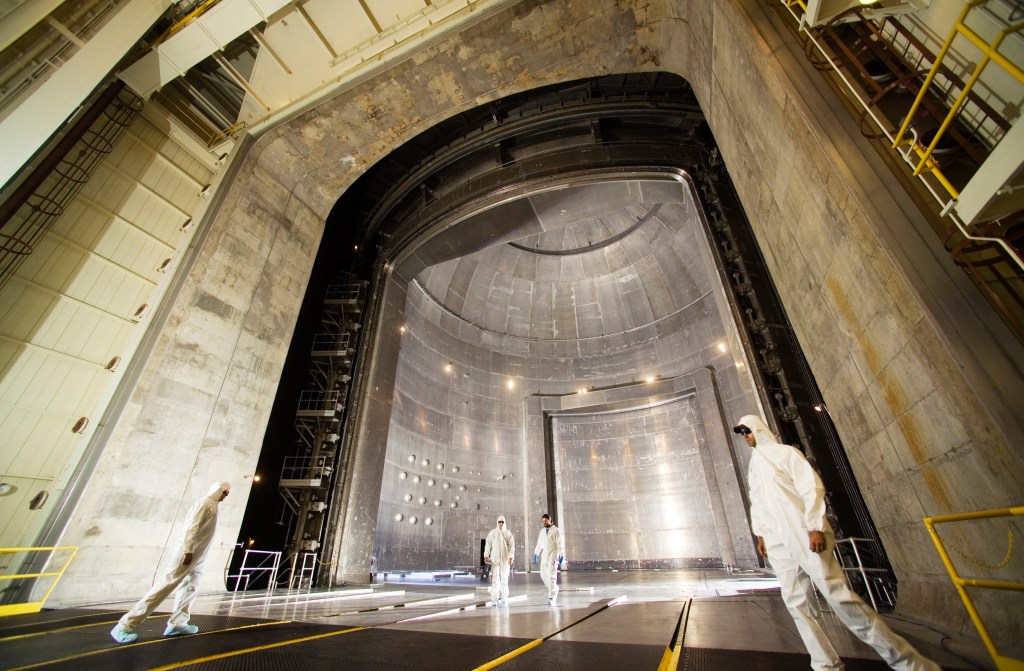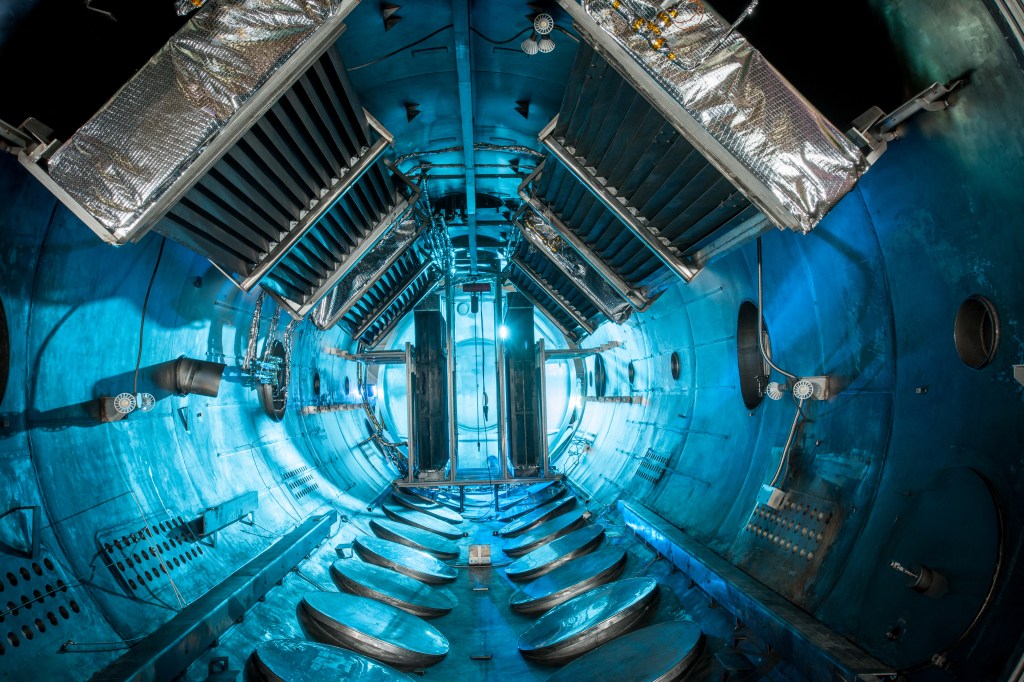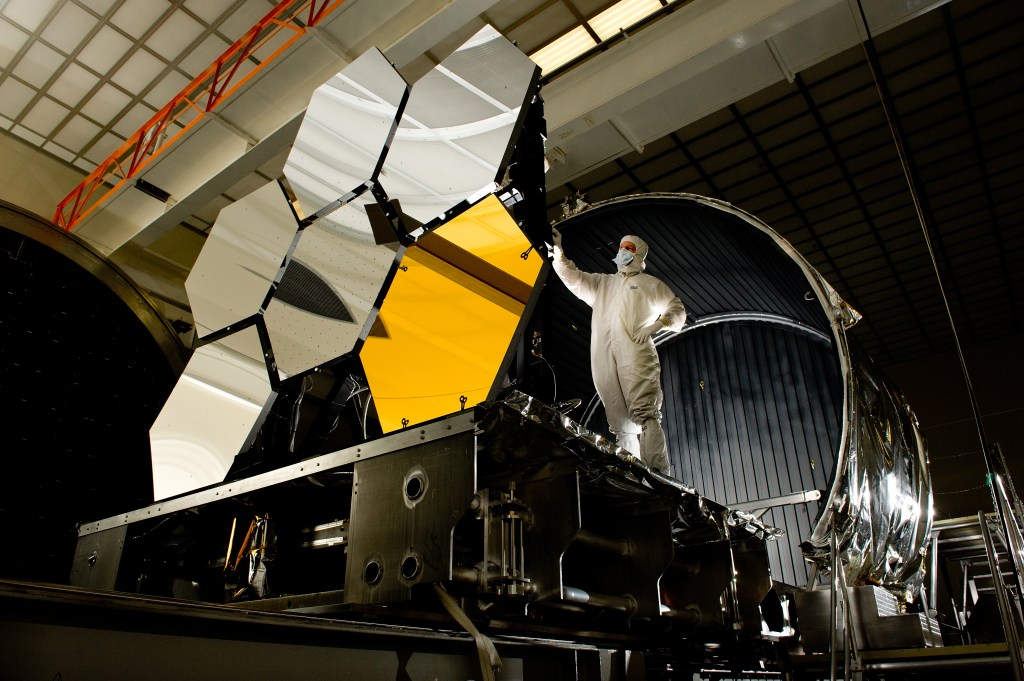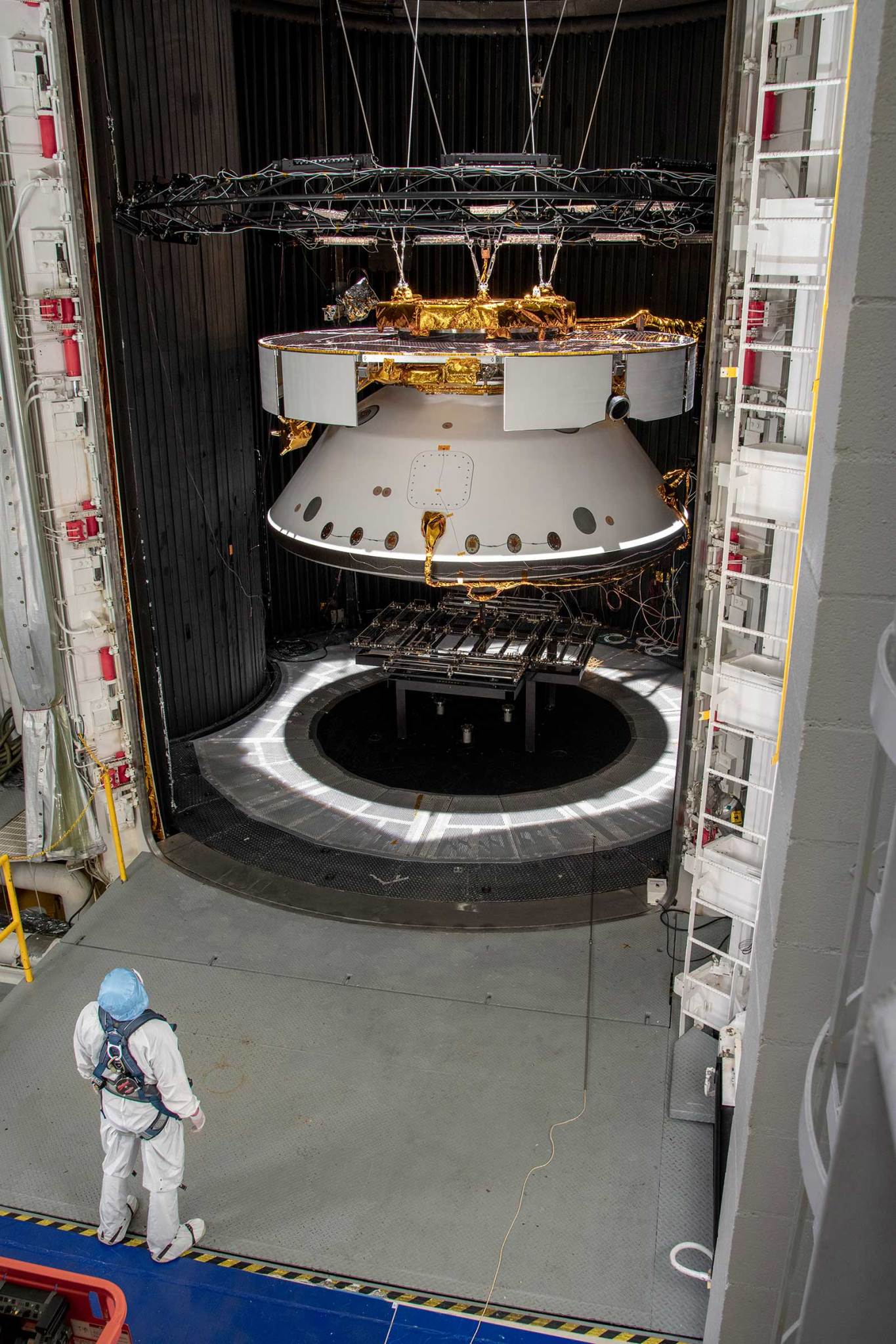


25-Foot Space Simulator

Built in 1961, the 25-Foot Space Simulator at NASA’s Jet Propulsion Laboratory (JPL) is designed for environmental testing of robotic spacecraft in simulated interplanetary conditions of extreme cold, high vacuum and intense solar radiation. The chamber is a stainless-steel cylindrical vessel with a test diameter of 25 feet and a height of 85 feet. A 15-by-25-foot side-opening door provides access to test-item loading.
Interplanetary probes evaluated in this facility have included the Ranger, Mariner, Voyager, Galileo and Cassini spacecraft, among others. Most recently, the 25-Foot hosted studies of Mars 2020 mission vehicles: both the Perseverance rover and the Mars helicopter Ingenuity—known informally as Ginny.
During testing in 2019, Ingenuity underwent a multiweek evaluation under Mars-like conditions replicated inside the chamber. The wispy, mostly-carbon-dioxide Martian atmosphere—less than 1 percent as thick as Earth’s—was simulated as Ginny was put through its paces, its gear checked and rechecked, and eventually deployed from the belly of the Perseverance rover for short, restrained flights within the 25-Foot. To assess the effect of the weak Martian gravity—one-third that of Earth’s—on helicopter flight, researchers devised a gravity offload system: a motorized lanyard attached to the top of the diminutive copter.
The extensive testing within the chamber paid off, as Ginny made its own historical mark on April 19, 2021. From a spot in Jezero Crater now named Wright Brothers Field, Ginny rose to 10 feet (3 meters) above Martian soil, briefly hovered, completed a turn, and then landed. Other successful Mars helicopter flights have followed since, and more are planned.
> Article: National Park Service Article about the Test Facility

























